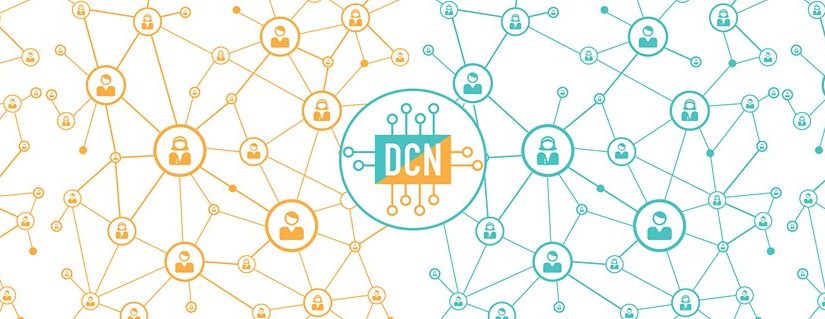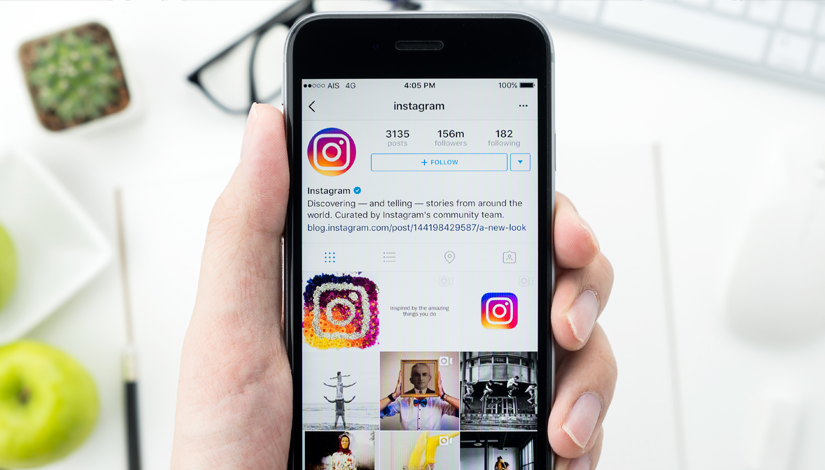Gaming Communities in and beyond Game Worlds (Click for PDF)
Zachary Riordan
Curtin University: Bentley
Correspondence: Zachary.Riordan@student.curtin.edu.au
Abstract
This paper discusses many of the most important aspects of community in gaming, within and beyond the game world. This includes: how communities form in online games and how activities centred around gaming facilitate online communities. The paper argues that games, and online subsidiary activities centred around them, provide social benefits to participants that compliment off-line social interaction by promoting the growth of communities both within and beyond the game world. More specifically, this paper analyses and explores: game worlds, “third place”, flow, hallucination of the real, text-based messaging, Voice over Internet Protocol, playing with friends, social media content creation, and “modding”; and relates these aspects to social benefits including: bridging and bonding social capital, agency, social proximity, familiarity, and weak and strong ties.
Keywords: community, gaming, social capital, weak and strong ties.
Gaming Communities in and beyond Game Worlds
The social benefits of game play and communities created within games have been extensively researched (Trepte, Reinecke, and Juechems, 2012). In the context of 2018, communities not only thrive within games themselves but also the secondary activities surrounding the games. This paper argues that: games, and online subsidiary activities centred around them, provide social benefits to participants that compliment off-line social interaction by promoting the growth of communities both within and beyond the game world. This paper will firstly discuss how communities form within game worlds and the types of communities created. Then it will explore how these, and new, communities form and prosper via subsidiary online activities that centre around games. These subsidiary activities include, but are not limited to, social media content creation and modifying games. Throughout the paper I will also analyse the social benefits that players and participants attain because of the communities they become a part of.
In-Game Communities and Immersive Game Worlds
Online gaming has developed over multiple decades, with video games dating back over 45 years (Leaver, 2018). The realism, expansiveness and detail in video games has, obviously, increased extensively over this time. This, and the number of participants is likely to continue to increase in future years (Leaver, 2018; Kim, Lee, Thomas, and Dombrowski, 2009). Far from the likes of static games such as “Pong”, these games are detailed enough for players to express themselves within the game (Leaver, 2018). Furthermore, because of technologies such as the World Wide Web, players can interact with not only the game world but other players. This interaction, as well as communication, forms the basis for online communities to develop and grow (Steinkuehler, and Williams, 2006). As detailed below, player interaction occurs within games and using other platforms such as social media.
Many games have enough detail that immersive worlds are created, where players are, at-least for the most part, solely focused on what is happening in the game. Frostling-Henningsson (2009), describes this state of being as “flow”. Sufficiently detailed games can take multiple forms and include multiple genres of games. However, game genres such as Massively Multiplayer Online Role-Playing Games (MMORPGs) are the most profound examples of online game worlds. These games can be described as “Third places”, which are “crucial… for civic interaction” (Williams, Ducheneaut, Zhang, Yee, and Nickell, 2006; Oldenburg, 1997). This is because of the extensiveness of the game and the actions available to the player (Williams and Ducheneaut, et. al., 2006). There are many roles a player can play, hence role-playing game, and no one player can be a master of everything. Therefore, to prosper in these “worlds” (Frostling-Henningsson, 2009) players should not only communicate but also cooperate with each other (Williams and Ducheneaut, et. al., 2006). This cooperation leads to communities forming within the game. Katz, Rice, Acord, Dasgupta, and David (2004) describe this type of community as a “pseudo-community”. This does not mean that the community is not real, but rather the community is based in a virtual world and has a group focus. The community type “Social Network” could also apply for some players or groups who exhibit individual centred attributes (Katz, et al., 2004). Furthermore, common goals and ongoing communication lead to partnerships, friendships and strong ties developing in the game (Williams and Ducheneaut, et. al., 2006; Domahidi, Festl, and Quandt, 2014).
One well researched game is popular MMORPG “World of Warcraft”, which at its peak had twenty million monthly paid players (Leaver, 2018). This game’s popularity can largely be attributed to the communities around and in the game that were developed because of the immersive, detailed, and continuing world centred around engaging gameplay (Williams and Ducheneaut, et. al., 2006). Game mechanics, such as an in-depth virtual economy and levelling system, lead to a “hallucination of the real” (Frostling-Henningsson, 2009) where new personas, personalities and lifestyles are created and/or expressed.
The state of “flow” and the “hallucination of the real” are both ways of describing the level of immersion games facilitate. This does not only occur in MMORPGs but also First-Person Shooters (FPSs). In these games, players are looking through the eyes of a soldier that they control. Online gameplay is centred around fighting against, and with, other players. Candy (2012) describes his level of extreme focus on trying to keep himself but more importantly, his teammates alive. With games such as “Counter Strike: Global Offensive” (CS: GO) a team of players work together to fight against another team. Much like a virtually violent sport (Williams and Ducheneaut, et. al., 2006). Candy (2012) states that the level of cooperation and fast paced nature of the games lead to strong friendships being formed. This can be described as bonding social capital which develops into strong ties (Steinkuehler, and Williams, 2006). These players turn their team into a community, one of which, the members are very close. Even so much so that once virtual friendships expand past their initial “third place” into the offline world (Candy, 2012).
As stated above, being able to communicate is obviously a key driver in forming social bonds and communities. There are many ways in which games facilitate and promote communication between players. The simplest way many games facilitate online communication, is through in-game chat. This allows players to communicate using text-based messages. However, this is crude by 2018’s standards. The time taken to create a message causes a delay between when the producer wants to communicate the message and when the viewer receives it. The, relatively, long time that the message takes to create, means that this form of communication is less often used in fast paced games and/or is often limited to use for greetings when gameplay is slower. This limits the ability for players to acquire bonding social capital or develop strong ties through using in-game, text-based messaging alone. In saying this, the messenger’s in-game name is associated with the message, meaning social proximately, familiarity, and bridging social capital is created using in-game chat (Trepte, Reinecke, and Juechems, 2012).
In many online FPSs, like “CS: GO”, Voice over Internet Protocol (VoIP) is a feature that allows players to speak to other players while in the game. VoIP within the game can facilitate the communication between players who are not friends. In the case of “CS: GO”, in-game VoIP is commonly used when matchmaking with-out friends. This means the players who become part of your team are not players that you personally know. VoIP allows these new teammates to strategize, give “call outs”, or simply communicate in real time. Strategizing or simply giving good call outs result in social capital and a sense of agency for the communicator and would not be possible with-out the use of Voice over Internet Protocol (Candy, 2012). Real time communication also promotes a sense of “flow”, develops the game into a “third place”, and encourages players to form communities (Frostling-Henningsson, 2009; Williams and Ducheneaut, et. al., 2006; Candy, 2012).
Games have also used other ways of connecting players with each other. A standard feature in any online game in 2018, the ability to create a list of friends and easily join each other’s games, should not be overlooked as the most important aspect of facilitating social gameplay. The widespread inclusion is likely due to social reasons being the main cause of gameplay (Frostling-Henningsson, 2009; Domahidi, Festl, and Quandt, 2014) and the exclusion of this feature, and therefore social gameplay, would be essentially unacceptable for many gamers.
In some cases, game features connect existing players with their friends whom may not play the game. Social games, or games based on social networking platforms, have used this technique for many years (Di Loreto, and Gouaich, 2010). More games, and games of different genres, are starting to utilize this technique. A recent example (2017/2018) is “Fortnite” (Bedford, 2018). When a player is not in a game of “Fortnite” they are firstly prompted to invite other friends that are online. However, players are also prompted to link their game account to Facebook. This is a clear example of “Fortnite” utilising in-game features, and other digital networking technologies, to extend the gaming community for the specific player and to increase the size of “Fortnite’s” community. This results in bonding social capital being created between existing friends who were Facebook friends but can now easily game together and strengthen their bond.
Communities in Subsidiary Activities Centred Around Gaming
Being part of a gaming community can offer much more than just playing a game. As detailed above, very strong sub-communities can form within a game itself. However, arguably to benefit most from the community around a specific game, the player should participate in multiple aspects of the community. This includes many subsidiary activities that centre around a game but are beyond gameplay. The biggest activity, in terms of active participants, is being involved in social media based on the game. The social media coverage of games is very large and complex (Minguez, 2014). The communities formed on social media platforms are not necessarily the same as the ones formed within games, but any content created by, from, or about a game is still centred around that game and connects to the game itself. Social media coverage of a game and any communities that form because of this are extensions of the game and the communities it promotes.
The media created based on games is essentially infinite and impossible to analyse in its entirety. Due to the shear amount of content, social media content about games, or a specific game, should be broken down into three groups: non-professional user-generated content, professional user-generated content, and industry generated content. Furthermore, where there is a group of participants that can share commonalities, there is a community (MacQueen, et al., 2001). This means that the members of each of these groups can be classified as a community. For example, a group of social media marketers working for a company would be considered a community.
Communities also interact with each other on social media. For example, industry members often promote professional content-creators’ work. This shares some of the industry’s agency with the content creator as a gift for creating content on their game. Specifically, “Fortnite” representatives often use their institutional authority to share and promote video content made by aspiring content creators (Fortnite, 2018). Industry members also “like” or “favourite” non-professional user-generated content. This gives the player social capital and agency in several sub-communities such as their friends or other players. Both actions, and others not mentioned, create mutual benefits and provide motivation for all parties.
Another important subsidiary activity based on gaming, is “modding” or modifying games. “Mods” or modifications to a game are quite commonplace in certain single player games such as “Fallout” (Bailey, 2018). Communities around “mods” or certain “modders” (modifiers) are also quite extensive. Because of the advancement in hardware and software used to create “mods” and the large number of people interest in games, many “mods” have been made. However, the ability to create useful, or even professional, “mods” is highly respected in the gaming community. This has meant “modders”, especially the best ones, receive a large amount of agency and social capital within their sub-community, and even the gaming community in general.
“Mods” can range in size from very small, to whole new games created in a different game engine (Bailey, 2018). The small “mods” can be made by one person, however, the largest “mods” are made by a team. This team requires large amounts of cooperation and collective problem solving. Furthermore, a team of “modders” can spend many years creating a “mod” without guaranteed financial compensation. Because of this, and the passion required to undertake such a task, the group can form a strong community based on gaming. Social capital is created within the community and received from beyond the “modding” community as detailed above. Furthermore, the feeling of belonging and accomplishment, and the friendships developed are just some of the social benefits that occur because of this subsidiary activity of gaming (Koivisto, 2003).
Conclusion
The communities formed within and beyond games can provide large social benefits to the participants. This includes but is not limited to, bridging and bonding social capital, agency, and social proximity and familiarity. All, or some, of these benefits combine and allow participants of gaming communities to create and develop friendships and belong to their community(s). This can occur within the game world or outside of it, through online subsidiary activities. However, both are centred around gaming and the communities that occur because of it.
The concept of communities, even within a gaming stream, is very large. Moreover, gaming as a stream is very broad and complex. This has meant this paper cannot, and has not, explored all aspects of community within gaming. More specifically, aspects including: e-sports, cosplay, gaming events, gaming lounges, and more, have not been discussed. Also, greater depth in the aspects discussed could occur if the focus of the paper was narrower. However, this paper has discussed many of the most important aspects of community in gaming, including: game worlds, “third place”, flow, hallucination of the real, text-based messaging, VoIP, playing with friends, social media content creation, and “modding”.
References
Bailey, D. (2018, January 3). This mod brings all of Fallout: New Vegas into the Fallout 4 engine. PC Games N. Retrieved from https://www.pcgamesn.com/fallout-4/fallout-4-new-vegas-mod
Bedford, J. (2018, February 2). Fortnite: Battle Royale – How to link friends on Facebook. Metabomb. Retrieved from https://www.metabomb.net/fortnite-battle-royale/gameplay-guides/fortnite-battle-royale-how-to-link-friends-on-facebook
Candy, G. (2012). In video games we trust: High-speed sociality in the 21st century. Fast Capitalism, 2012. Retrieved from http://www.uta.edu/huma/agger/fastcapitalism/9_1/candy9_1.html
Di Loreto, I. & Gouaich, A. (2010). Social Casual Games Success is not so Casual. Research Report, University of Montplellier – CNRS. Retrieved from http://hal.archives-ouvertes.fr/docs/00/48/69/34/PDF/FunAndGames2010-03-22.pdf
Domahidi, E. Festl, R. and Quandt, T. (2014). To dwell among gamers: Investigating the relationship between social online game use and gaming-related friendships. Computers in Human Behaviour, 35. 107 – 115. Retrieved from https://www.researchgate.net/publication/260947110_To_dwell_among_gamers_Investigating_the_relationship_between_social_online_game_use_and_gaming-related_friendships
Fortnite. (2018, March 31). Laugh along with @TSM_Hamlinz as he pilots his way to a win [Tweet]. Retrieved from https://twitter.com/FortniteGame/status/980095979608268800
Frostling-Henningsson, M. (2009). First-Person Shooter Games as a Way of Connecting to people: “Brothers in Blood” Cyberpsychology & Behaviour 12(5). Retrieved from http://web.b.ebscohost.com.dbgw.lis.curtin.edu.au/ehost/detail/detail?vid=0&sid=9bb6b4f6-443f-4f88-ab26-15331092aa85%40sessionmgr102&bdata=JnNpdGU9ZWhvc3QtbGl2ZQ%3d%3d#AN=44564372&db=bth
Katz, J. E., Rice, R. E., Acord, S., Dasgupta, K., & David, K. (2004). Personal Mediated Communication and the Concept of Community in Theory and Practice. In P. Kalbfleisch (Ed.), Communication and Community: Communication Yearbook 28 (pp. 315-371). Retrieved from http://www.comm.ucsb.edu/faculty/rrice/A80KatzRiceAcordDasguptaDavid2004.pdf
Kim, J., Lee, E. Thomas, T. & Dombrowski, C. (2009). Storytelling in new media: The case of alternate reality games, 2001-2009. First Monday, 4(6). Retrieved from http://firstmonday.org/htbin/cgiwrap/bin/ojs/index.php/fm/article/viewArticle/2484/2199
Koivisto, E. (2003). Supporting Communities in Massively Multiplayer Online Role-Playing Games by Game Design. Digital Games Research Association Conference. Retrieved from http://www.digra.org/dl/db/05150.48442.pdf
Leaver, T. (2018). Web Media: Gaming Media Convergence [iLecture]. Retrieved from https://lms.curtin.edu.au/webapps/blackboard/content/contentWrapper.jsp?course_id=_80670_1&displayName=iLectures&href=%2Fwebapps%2Fblackboard%2Fexecute%2Fblti%2FlaunchPlacement%3Fblti_placement_id%3D_40_1%26course_id%3D_80670_1%26mode%3Dview%26wrapped%3Dtrue
MacQueen, K. M., McLellan, E., Metzger, D. S., Kegeles, S., Strauss, R. P., Scotti, R., Blanchard, L., and Trotter, R. T. (2001). What Is Community? An Evidence-Based Definition for Participatory Public Health. American Journal of Public Health, 91(12), 1929–1938. Retrieved from https://www.ncbi.nlm.nih.gov/pmc/articles/PMC1446907
Minguez, K. (2014, November 7). The Merging of Social Media and Gaming. Social Media Today. Retrieved from https://www.socialmediatoday.com/content/merging-social-media-and-gaming
Oldenburg, Ray (1997). The great good place: cafés, coffee shops, community centres, beauty parlours, general stores, bars, hangouts, and how they get you through the day. Retrieved from http://illinois-online.org/krassa/ps410/Readings/Third%20Places/Oldenburg-Vanishing%20third%20places%201997.pdf
Steinkuehler, C. & Williams, D. (2006). Where Everybody Knows Your (Screen) Name: Online Games as “Third Places”. Journal of Computer Mediated Communication, 11(4). Retrieved from http://onlinelibrary.wiley.com/doi/10.1111/j.1083-6101.2006.00300.x/full
Trepte, S. Reinecke, L. and Juechems, K. (2012). The social side of gaming: How playing online computer games creates online and offline social support. Computers in Human Behaviour, 28. 832 – 839. Retrieved from https://www.researchgate.net/publication/233489327_The_social_side_of_gaming_How_playing_online_computer_games_creates_online_and_offline_social_support
Williams, D., Ducheneaut, N., Zhang, L., Yee, N., & Nickell, E. (2006). From Tree House to Barracks: The Social Life of Guilds in World of Warcraft. Games & Culture, 1(4), 338-361. Retrieved from http://journals.sagepub.com.dbgw.lis.curtin.edu.au/doi/abs/10.1177/1555412006292616




